Buyer's Guide: Mid-Range to High-End, May 2005
by Jarred Walton on May 23, 2005 5:30 PM EST- Posted in
- Guides
Storage Recommendations
There hasn't been a whole lot of change in the storage segment in terms of new products. Prices have dropped, but the recommendations overall remain about the same. Our recent Price Guide covered the storage market in more detail, and we'll refer interested readers there. The basic summary is that the HDD scene has not changed too much, and the DVDR scene has changed even less. The good news is that it means it's less difficult to pick a good product, which is especially true of DVDRs. The bad news is that I/O intensive tasks will still be waiting on the drives as much as ever.A topic that also deserves mention in regards to hard drives is RAID (Redundant Array of Inexpensive Disks). RAID can allow for either increased transfer rates, improved reliability, or both. RAID 0 provides increased performance by reading and writing to multiple drives at the same time in a process called striping, effectively doubling the sustained transfer rate for two drives. The problem is that if any drive in a RAID 0 configuration fails, you lose all the data. That's definitely not something to take lightly. RAID 1 goes the other route and provides a 1 for 1 copy of everything written to the hard drives, a.k.a. mirroring. In the event of a drive failure, the faulty drive is deactivated and you run with one drive until a replacement can be found. The drawback is that you now pay twice as much per GB of available storage. RAID 1+0 (sometimes called RAID 10) combines both striping and mirroring, but it requires at least four drives for the standard setup and you still only get half the realizable storage. RAID 5 is the most common remaining option, requiring a minimum of three drives to function. Only one of the drives in the array becomes "lost" capacity, but you need a good (re: expensive) controller to get acceptable RAID 5 performance. We don't really feel that RAID is something most people need, and a good backup strategy - to CDs or DVDs, usually - is often just as important as redundancy. Still, the option is there for those who need it.
Mid-Range HDD Recommendation
Hard Drive: Seagate 250GB 7200.8 SATA
Price: $128 Shipped
Picking a good hard drive for the Mid-Range market is relatively easy. You want a low cost per GB, and for the most part, the different brands all perform at close to the same level. Provided that you get a hard drive that has Fluid Dynamic Bearings (FDB), you shouldn't have to worry about any high pitched whine emanating from your computer. (This was a problem in the past, particularly with Western Digital and Maxtor drives.) Unless you're trying to build a truly silent PC, the amount of noise generated by the heads moving around will normally be drowned out by the noise of the GPU, CPU, and case fans - even the noisiest of drives is difficult to hear when confined within an ATX case. Just to make this clear, we mean that seek noise is difficult to hear, not bearing noise; we have numerous older drives that emit a high-pitched whine that can be heard a couple of rooms away.
Our recommendation goes to the Seagate model for several reasons. Besides being spacious and quiet, it provides NCQ support and a 5-year warranty, all at a price that's just as low as any of the competition. If you are for some reason opposed to 250GB hard drives, you can find everything from 80GB to 200GB at a lower price than the Seagate 250GB (depending on model and brand). The smaller drives end up coming with a higher cost per GB, however, to the point where anything less than 80GB isn't worth considering. $60 for an 80GB drive is still a reasonable deal, but you can double the capacity for only a 50% price increase. Other than Seagate, we like Samsung drives due to their even lower noise levels. Hitachi, Maxtor, and Western Digital are all decent as well, but we would suggest that you make sure you get FDB with the Maxtor and WD drives. SATA-2 drives are also starting to show up at retail, and while they may not offer a performance advantage, the price difference is negligible. Hitachi is the only manufacturer currently showing up in our Pricing Engine, although that will change with time.
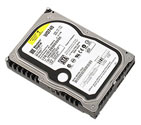 |
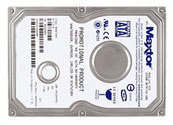 |
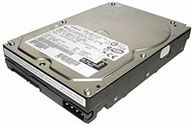 |
| Click images to enlarge. | ||
High-End HDD Recommendations
Hard Drive: Western Digital Raptor 74GB 10,000RPM SATA
Price: $180 Shipped
Hard Drive: Maxtor DiamondMax 10 250GB 16MB SATA
Price: $160 Shipped
Hard Drive: Hitachi 7K250 400GB SATA
Price: $265 Shipped
There are three areas that we consider to be high end for hard drives. First is the option for a faster spindle speed, leading to faster transfer rates and access times. 10,000RPM SATA and SCSI drives are available, but the SATA drives are cheaper and don't require an additional SCSI controller. You can even go for a 15,000RPM SCSI drive, although the cost is twice as much (or more) as that of the 10,000RPM drives of the same capacity. The next item that makes a hard drive high end is additional cache, and at present, the only manufacturer to fill that niche is Maxtor, with both its SATA and PATA MaxLine III/DiamondMax 10 models including 16MB of cache rather than 8MB. The final item that can make a high end drive is increased capacity, with 300 to 400 GB drives now available. Increased capacity via higher data densities also improves the transfer rate of a drive, although it doesn't help the access times. Determining which of these features are the most important along with keeping price in check is difficult. Sure, you can get 146GB 15,000RPM SCSI drives to satisfy the need for performance and capacity, but at a cost of over $1000 per drive, they're not meant for mere mortals.
In the end, we can't really give one specific recommendation for a high end drive. If you need capacity above all else, the Hitachi 7K250 400GB will fit the bill. Seagate also offers a 400GB 7200.8 drive for about $25 more if you're interested. Striking a middle ground between performance and capacity is the Maxtor DiamondMax 10 line, of which we've selected the 250GB model. The 300GB model has a similar cost per GB, so if you want a bit more capacity, that's definitely an option. While we don't care too much for the old IDE interface, we should also note that the Maxtor drives are available in PATA format for quite a bit less. Finally, if you're only interested in having the highest possible sustained transfer rate and access times, the Western Digital Raptor 74GB gets our recommendation again. 15,000RPM SCSI drives would be even faster than the Raptor, but they start at around $400 for the Hitachi 15K73 and go up from there - twice as much as the Raptor, not counting the cost of SCSI controllers and cables.
Optical Recommendation
DVD+R Drive: NEC 16X 3520A
Price: $48 Shipped
With 16X burn speeds for both DVD+R and DVD-R media and 8X/6X for the respective RW variants, the only thing really missing from the NEC 3520A is DVD-RAM support. If you need or want that, the LG GSA-4163B has 5X DVD-RAM support for just a few dollars more. Either drive will work well for most people, and while some will argue that Plextor or Sony drives are better, we haven't been able to back up such claims with any tests. Given the higher price - over twice as much in the case of the Plextor 16X - we cannot justify such a purchase. Pioneer's DVR-109 is another alternative, and Lite-On, Toshiba, and BenQ are also worth considering, assuming that the price is right. We feel that features and performance are all now close enough that we'd simply take the cheapest 16X DVDR Dual-Layer capable drive and be done with it, which is why the NEC and LG get our recommendation. As always, match the color of the drive with your case if that's important to you.
Floppy Recommendation
Floppy: Any
Price: $8 Shipped
When you're spending this much money on a nice, new system, it's almost a shame to have to put in old technology like a floppy drive. While not strictly required, we'd rather have the drive installed and never use it than to not have it and discover later that we need it. Anyone planning on using RAID will definitely want a floppy drive, as it's required for installing XP onto any RAID setup that we're aware of. Windows Longhorn should finally kill off the floppy requirement, but that's still more than a year off. $8 over 365 days amounts to just 2.2 cents per day - you can manage it, right? As with the DVDR drive, you will probably want to match the floppy to the case.


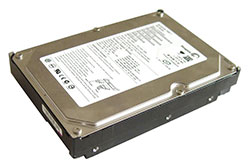
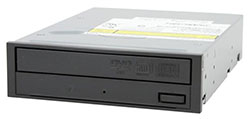








60 Comments
View All Comments
CP5670 - Wednesday, May 25, 2005 - link
You can still get Mitsubishi 2070s (I got a new one for $600 about three weeks ago), although they are out of production and are somewhat hard to find.JarredWalton - Wednesday, May 25, 2005 - link
44 - Venice and Winchester seem to be the same chip, only with SSE3 enabled on Venice. I don't think it matters much for games right now, but with the difference only being $4 now, go for it. (At the time I wrote this Guide, Winchester retail chips were $20 less than Venice retail chips, which is harder to justify.)47 - I've emailed a few people about this, but basically there just aren't any improvements to CRTs coming out these days. You can still find some Dell, HP, etc. monitors that use the same tube as the NEC FE2111SB, and it's a good tube overall. The Mitsubishi 2070 still boasts the best specs I'm aware of (140 kHz horizontal scan rate and 2048x1536 resolution).
If you want a CRT, by all means get one. The Samsung 997DF is still a decent 19" model for around $210, though it's not perfectly flat. NEC FE991SB are also good, though they cost more than the Samsung. If you can find a discount on a Dell, HP, etc. CRT and it sports an aperture grille, it's probably going to be similar enough to the NEC/Mitsubishi models that you wouldn't notice other than the exterior.
Personally, I'm just tired of large CRTs, and I've recommended them in so many Guides (without any change) that it's time to move on. I'll continue to mention them, but I don't recommend them anymore for a lot of people.
CrimsonChaos - Wednesday, May 25, 2005 - link
Great guide!I was recently considering buying a system inbetween a mid-range and high-end computer. This would have been a tremendous help to me as I started the researching process.
Just a quick question -- why no PC Power & Cooling power supply for a high-end system? That too expensive even for the biggest enthusiast (aka money-waster)??
Also, going to add any normal CRT recommendations to the "Display" part?
Olaf van der Spek - Wednesday, May 25, 2005 - link
Re: 16> and I feel about the same for audio.
That's not a very strong argument.
But because audio is always integrated while video isn't, it's indeed simpler to add one later.
ceefka - Wednesday, May 25, 2005 - link
#43 Reapsy00,About every new CPU, mobo/chipset, graphicscard, RAM, LCD/CRT mentioned here has been benched, just not in this same article.
Also, recommendations here were winners in past benchmarkings before this article.
You'll even find links to benchmarks in the buyers guide. In my opinion AT has got it nailed pretty good.
dmaduram - Wednesday, May 25, 2005 - link
Kudos to Jarred for such an excellent guide -- it's quite informative!Just two quick questions -- first of all, with regard to gaming, is there an advantage in selecting a AMD-Venice core instead of a AMD-Wichester core? I was unsure on what specific applications recieved a boost from Venice's "SSE3" support.
Secondly, d'you know if there are any disadvantages in purchasing a Venice core instead of the recommended Wichester core? There's only a 4-dollar difference in price on NewEgg, so I was wondering which one I should buy for my gaming box :)
Reapsy00 - Wednesday, May 25, 2005 - link
You see lots of these buyer's guides on different sites, AT should take it further and build the system's and benchmark 'em.Calin - Wednesday, May 25, 2005 - link
No problem, TujanI wouldn't choose a VIA miniITX platform - the 1GHz processors are quite faster than the older 700-800MHz ones. However, their very size forces them to be niche systems.
If I would like a computer in my car, a MiniITX would be the best choice. But for a stand alone, I very much prefer upgradable PC technology
R3MF - Tuesday, May 24, 2005 - link
ah well, my new shuttle SN25P with a 3200 Venice, 6600GT (£98.00), and 250GB 7200.8 doesn't look too shabby.it even has onboard via-envy sound, and will be even better with a 7800GT and dual-core X2 early next year.
i am happy.
JarredWalton - Tuesday, May 24, 2005 - link
35 - Thanks. I wasn't aware of that. (I hate it when manufacturers do that!) Anyway, I added a comment about this in the article. Basically, I'm saying that RAM with TCCD blanks is still a great choice for overclockers looking for maximum clock speeds.